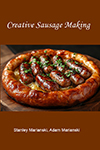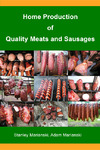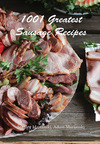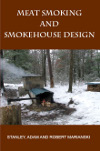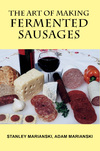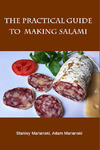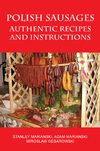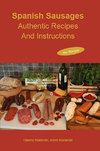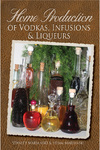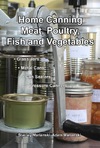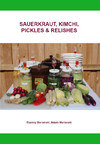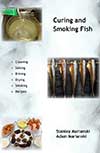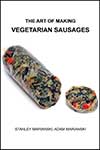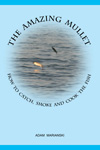Meats and Sausages
All Beef Sausage
| Meats | Metric | US |
|---|---|---|
| Beef class I without connective tissue * | 500 g | 1.10 lb |
| Beef class I with connective tissue | 150 g | 0.33 lb |
| Beef class IV (bloody parts allowed) ** | 300 g | 0.66 lb |
| Beef class V (sinews, gristle, tendons) | 50 g | 0.11 lb |
Ingredients per 1000g (1 kg) of meat
| Salt | 20 g | 3-1/3 tsp |
| Cure #1 | 2.5 g | 1/2 tsp |
| Sugar | 1.0 g | 1/5 tsp |
| Pepper | 4.0 g | 2 tsp |
| Paprika | 1.0 g | 1/2 tsp |
| Garlic | 3.0 g | 1 clove |
Instructions
- Curing solid beef chunks. Cut beef class I without connective tissue into 20 mm (3/4”) cubes. Mix with half salt (10 g) and half of Cure #1 (1.25 g). Pack tightly in a container, cover with cloth and hold in refrigerator for 3 days.
- Grind beef class IV through 8 mm plate. Grind beef class I with connective tissue through 2-3 mm plate. Grind beef class V through 2-3 mm plate.
- Using food processor emulsify beef class I with connective tissue and beef class V with 20% cold water (40 ml, 1.35 oz fl). Add spices during this step.
- Mix (knead) beef class I cubes until sticky. Add ground beef class IV and emulsified meat and mix all together.
- Stuff firmly into 55-65 mm synthetic fibrous casings making 40-45 cm (16-18”) links. Make a hanging loop.
- Hang for 12 hours in refrigerator or 2-3 hours at room temperature.
- Apply hot smoke for 100 min until casings become brown with red tint. Increase temperature to 75-90° C (167-194° F) and bake sausages for 30-40 min until sausages reach 68-70° C (154-158° F) internal temperature. A very thin smoke is allowed during baking.
- Cool in air.
- Keep refrigerated.
Notes
* beef class I is a very clean lean beef.
beef class V is beef rich in connective tissue (collagen) which will create gelatin and increase binding.
** beef class IV is a low grade beef which can always be substituted with a higher grade. In a commercial recipe all cuts of meats are utilized.
beef class V is beef rich in connective tissue (collagen) which will create gelatin and increase binding.
** beef class IV is a low grade beef which can always be substituted with a higher grade. In a commercial recipe all cuts of meats are utilized.


